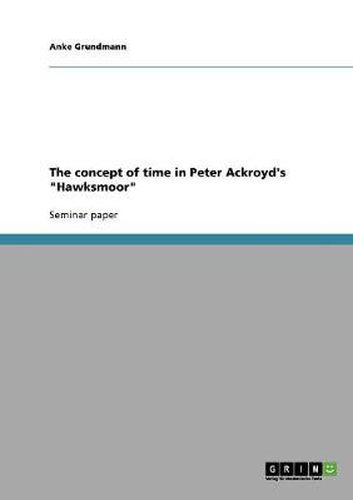Readings Newsletter
Become a Readings Member to make your shopping experience even easier.
Sign in or sign up for free!
You’re not far away from qualifying for FREE standard shipping within Australia
You’ve qualified for FREE standard shipping within Australia
The cart is loading…






Seminar paper from the year 2000 in the subject English Language and Literature Studies - Literature, grade: 2,0, Bielefeld University (Fakultat fur Linguistik und Literaturwissenschaft), course: Prosa der Postmoderne, 13 entries in the bibliography, language: English, abstract: Usually a novel contains a beginning, a middle and an end. That is what the reader expects from the majority of books. This convention is not only based on the presumption that only by this sequence of beginning, middle and end a reader will find the reading of a novel rewarding but there are also theoretical concepts demanding this structure. Mendilow points out that Aristotle was one of the first to stress the meaning of a general structure in a piece of literature. According to Aristotle [e]in Ganzes ist, was Anfang, Mitte und Ende hat. Ein Anfang ist, was selbst nicht mit Notwendigkeit auf etwas anderes folgt, nach dem jedoch naturlicherweise etwas anderes eintritt oder entsteht. Ein Ende ist umgekehrt, was selbst naturlicherweise auf etwas anderes folgt, und zwar notwendigerweise oder in der Regel, wahrend nach ihm nichts anderes mehr eintritt. Eine Mitte ist, was sowohl selbst auf etwas anderes folgt als auch etwas anderes nach sich zieht. This concept is true for realistic novels but it falls short for most of the postmodern novels. In this paper I will show how the structure of a linear plot is given up in Peter Ackroyd’s novel Hawksmoor. The sequence of beginning, middle and end evokes that all events are linked by a chain of causality. In Hawksmoor the chain of causality and the linear concept of time are replaced by a circular concept of time. The events in the novel and in particular the murders cannot be explained by the principle of causality. In my paper I will analyse the concept of time in Ackroyd’s novel. As a first step I will point out the relation of the novel to the historical figure Nicholas
$9.00 standard shipping within Australia
FREE standard shipping within Australia for orders over $100.00
Express & International shipping calculated at checkout
Seminar paper from the year 2000 in the subject English Language and Literature Studies - Literature, grade: 2,0, Bielefeld University (Fakultat fur Linguistik und Literaturwissenschaft), course: Prosa der Postmoderne, 13 entries in the bibliography, language: English, abstract: Usually a novel contains a beginning, a middle and an end. That is what the reader expects from the majority of books. This convention is not only based on the presumption that only by this sequence of beginning, middle and end a reader will find the reading of a novel rewarding but there are also theoretical concepts demanding this structure. Mendilow points out that Aristotle was one of the first to stress the meaning of a general structure in a piece of literature. According to Aristotle [e]in Ganzes ist, was Anfang, Mitte und Ende hat. Ein Anfang ist, was selbst nicht mit Notwendigkeit auf etwas anderes folgt, nach dem jedoch naturlicherweise etwas anderes eintritt oder entsteht. Ein Ende ist umgekehrt, was selbst naturlicherweise auf etwas anderes folgt, und zwar notwendigerweise oder in der Regel, wahrend nach ihm nichts anderes mehr eintritt. Eine Mitte ist, was sowohl selbst auf etwas anderes folgt als auch etwas anderes nach sich zieht. This concept is true for realistic novels but it falls short for most of the postmodern novels. In this paper I will show how the structure of a linear plot is given up in Peter Ackroyd’s novel Hawksmoor. The sequence of beginning, middle and end evokes that all events are linked by a chain of causality. In Hawksmoor the chain of causality and the linear concept of time are replaced by a circular concept of time. The events in the novel and in particular the murders cannot be explained by the principle of causality. In my paper I will analyse the concept of time in Ackroyd’s novel. As a first step I will point out the relation of the novel to the historical figure Nicholas